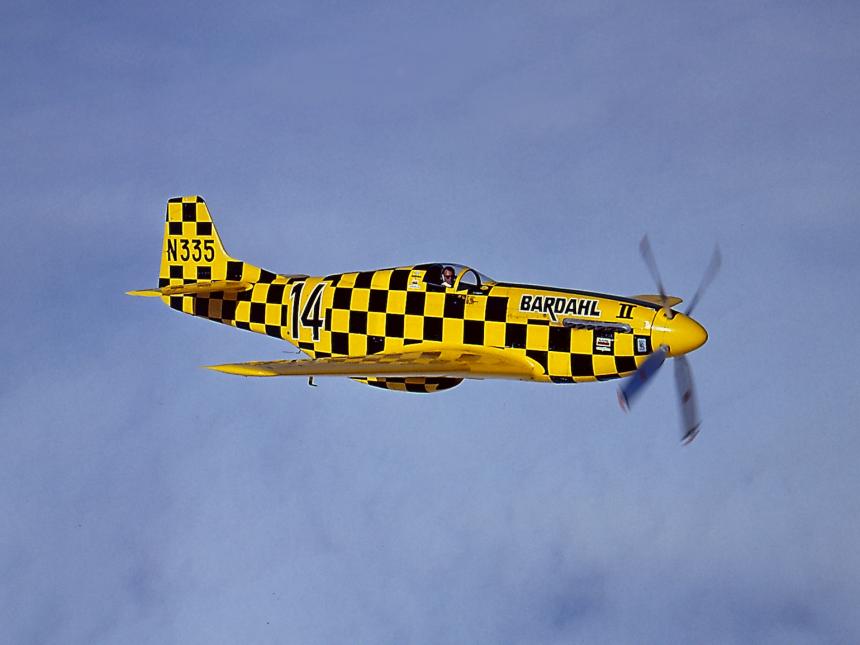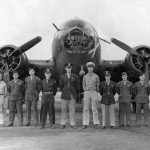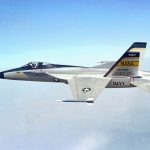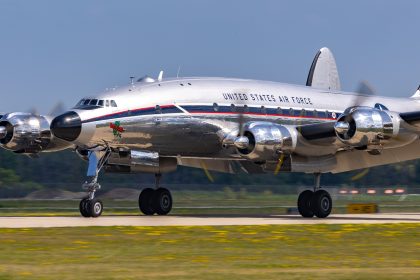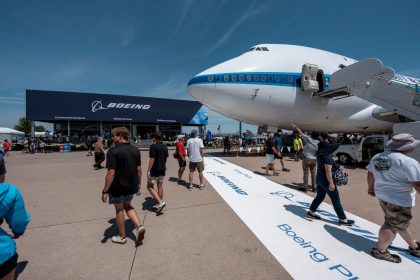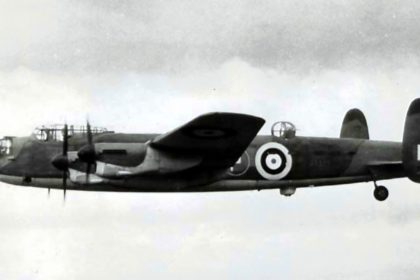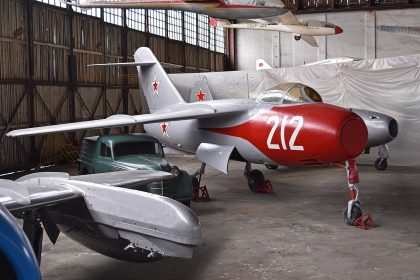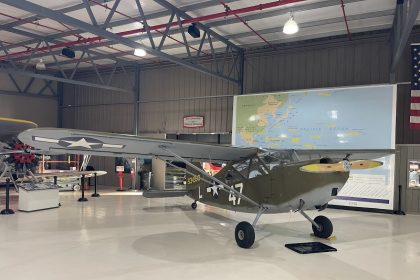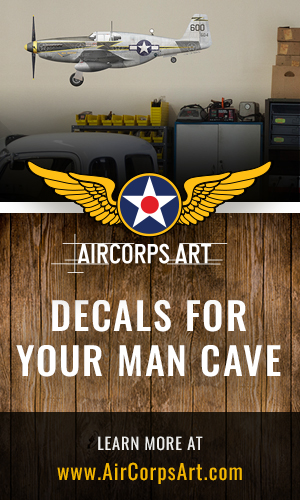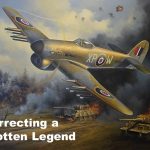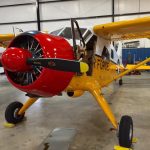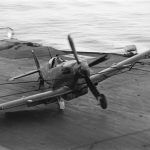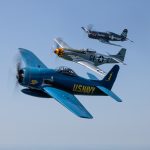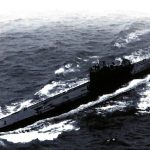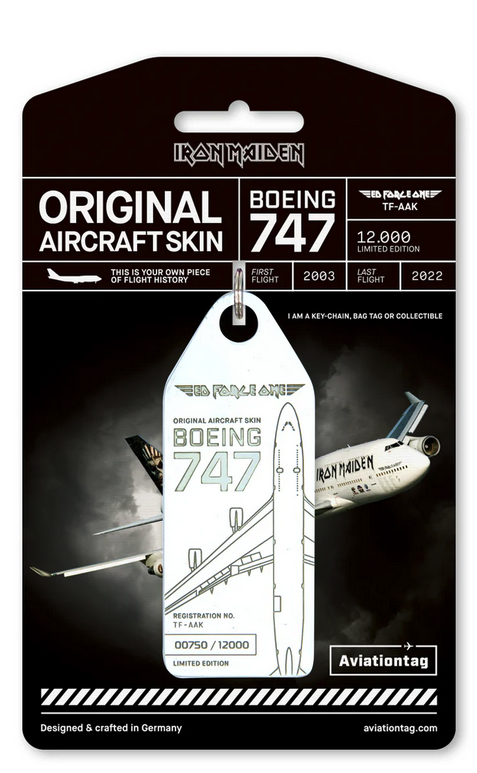One of the colorful characters of the early years of the warbird movement and the reconstituted National Championship Air Races was Ellis David (E.D.) Weiner. Though his life was cut tragically short in 1969, both of his famous Mustangs have survived to the present day and his transcontinental racer, N335, is now available for sale. Most learned warbird and air racing fans are familiar with the pre- and post-war Bendix Trophy Races. In addition to Jimmy Doolittle and Paul Mantz, some of the biggest names in aviation have won the prestigious trophy, including Roscoe Turner, Ben Howard, and Jacqueline Cochran. However, only the most hard-core racing fan can recall the Harold’s Club Transcontinental Trophy Dash that ran from 1964 through 1970. Weiner was the only two-time winner of the Dash and narrowly missed becoming a three-time winner when he finished second, in 1967. E.D. had great admiration for three-time Bendix winner, Paul Mantz, but exceeded the aviation legend by winning four transcontinental races between 1965 and 1968.
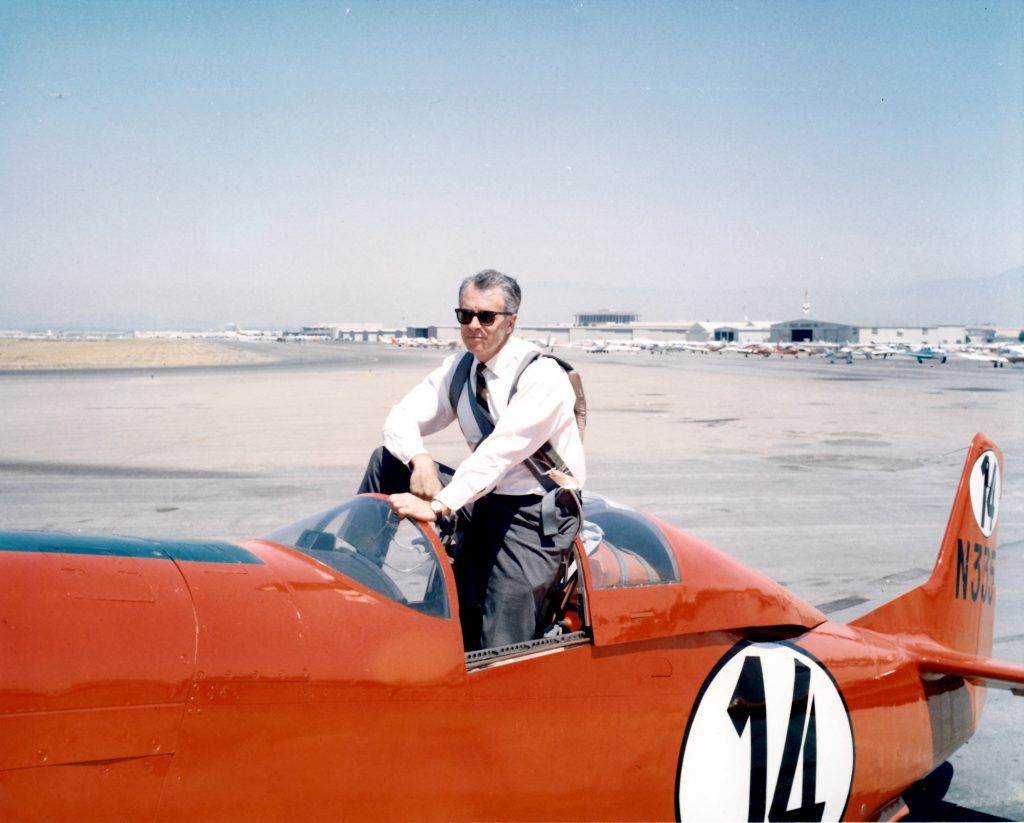
When Weiner purchased North American P-51D Mustang USAAF #44-72902 in 1962, it had logged a mere 427.25 hours since it rolled off North American’s Inglewood, California production line on February 19, 1945. After its brief service in the USAAF, where there is circumstantial evidence that suggests that it served as a replacement aircraft with the 479th Fighter Group at Wattisham, England, it was transferred to the Royal Canadian Air Force (RCAF) in August 1947 as RCAF 9564. and remained in service until September 1960.
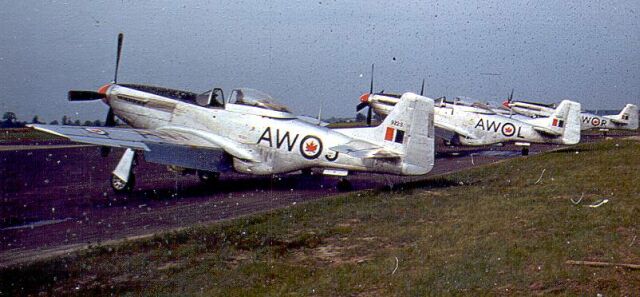
The fighter was retired from RCAF service in September 1960, and Weiner acquired the fighter, placed it on the register as N335, in 1962. In September 1965, Weiner entered the Mustang, Race 14, in the 2nd Annual Harold’s Club Transcontinental Trophy Dash, which at the time was a 2,260-mile sprint from St Petersburg, Florida, to Reno, Nevada. He handily won with an elapsed time of six hours, twenty-eight minutes, thirty-two seconds, at an average speed of 348.6mph. Although Race 14 appeared to be a stock Mustang, photos from the period show it was equipped with a 25-gallon anti-detonation fluid (ADI) tank behind the seat. What cannot be seen in photos is the wet wing that allowed Weiner to carry over 400 gallons of fuel.
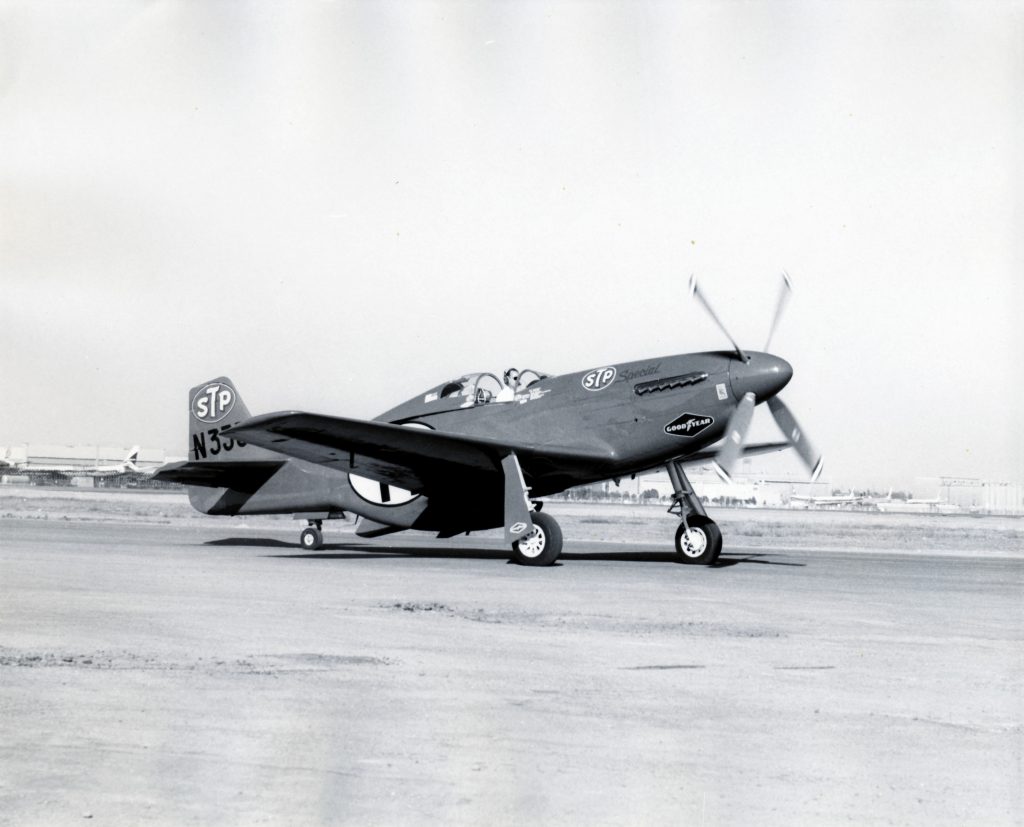
There was no Harold’s Club Transcontinental Trophy Dash scheduled prior to Reno 1966, so Weiner, Mike Carroll, and Dick Kestle organized their own three-plane race from St Petersburg, Florida to Palm Springs, California. Weiner naturally flew Race 14, Mike Carroll flew his wet-wing Hawker Sea Fury, and Dick Kestle flew a Mustang. Weiner took the win in five hours, thirty-six minutes. There was no cross-country air race scheduled in conjunction with the 1967 Cleveland National Air Races, so once again Weiner created one! He talked Mike Carroll, Bob Guilford, and Jim Ventura into putting up $1,000 a piece for a 1,961.2-mile race from Palm Springs, California, to Cleveland’s Burke-Lakefront Airport. Weiner flew Race 14, now named BARDAHL II, Carroll flew his Sea Fury, and Guilford and Ventura flew Mustangs. Just as Paul Mantz had done thirty years prior, Weiner roared into Cleveland in just four hours, fifty-five minutes, for an average speed of 411mph. Sadly, Ventura had been killed when his Mustang crashed in bad weather near Minden, Nebraska. Weiner graciously donated his winnings to Ventura’s widow.
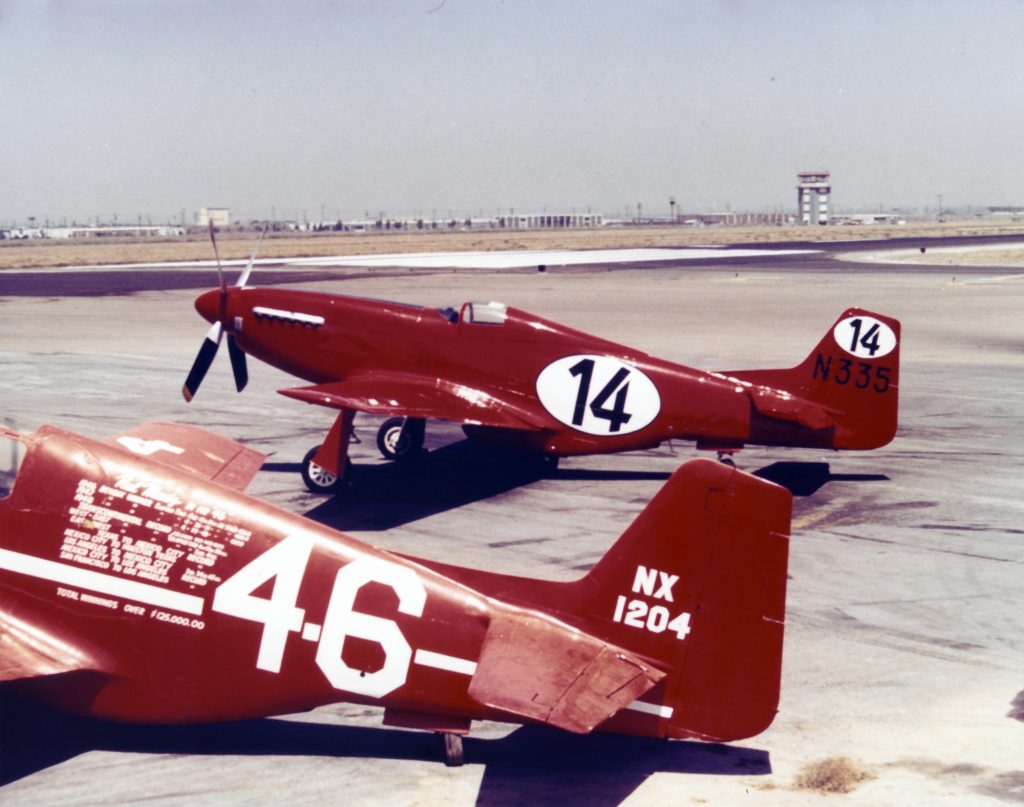
The 1967 Harold’s Club Trophy Dash started in Rockford, Illinois, thus shortening the distance to 1,606.2 miles. Five Mustangs and Mike Carroll’s Sea Fury were entered in the September 21 race, but the deck was stacked in favor of Weiner and Carroll, as they had the only wet-winged racers. As the racers approached Stead Field, everyone expected BARDAHL II to flash past home pylon first, but Carroll won the race in three hours, fifty minutes, fifty-five seconds, at 417.346mph. Weiner passed home pylon ten minutes later. After the race, Weiner admitted that he thought he had the race in the bag and had throttled back, thus handing the victory to Carroll.
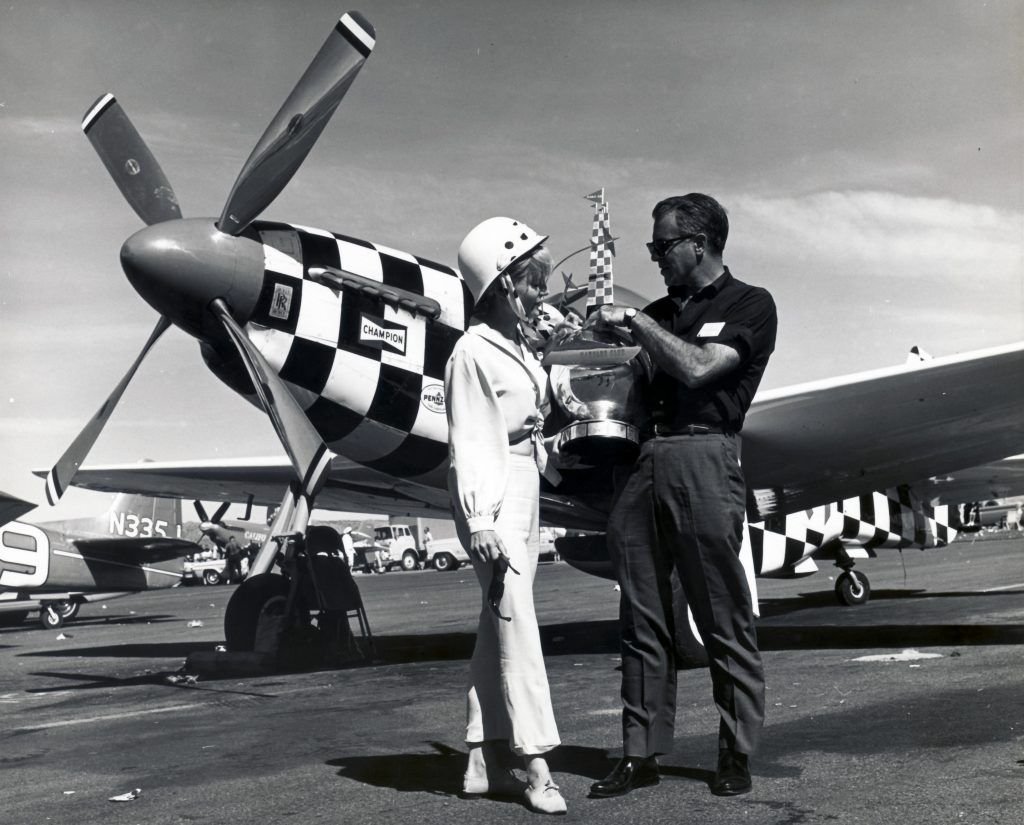
For 1968, the Harold’s Club, started in Milwaukee, thus lengthening the race slightly to 1,667 miles. The entry list for the race consisted of six P-51s, an F8F-2, and a rare P-64 and it was clear that Weiner was all-in because Race 14 was a radically different aircraft. Not only had the Mustang been re-painted in black & yellow checkers, but it was also modified with a low-profile windscreen and canopy which, according to Weiner, increased the top speed of BARDAHL II by 15mph. Simply put, Weiner absolutely blew away the field when he roared past Stead’s home pylon four hours, thirty-seven minutes, three seconds, after taking off from Milwaukee, averaging 361.141mph- an incredible thirty-six minutes ahead of the second-place aircraft.
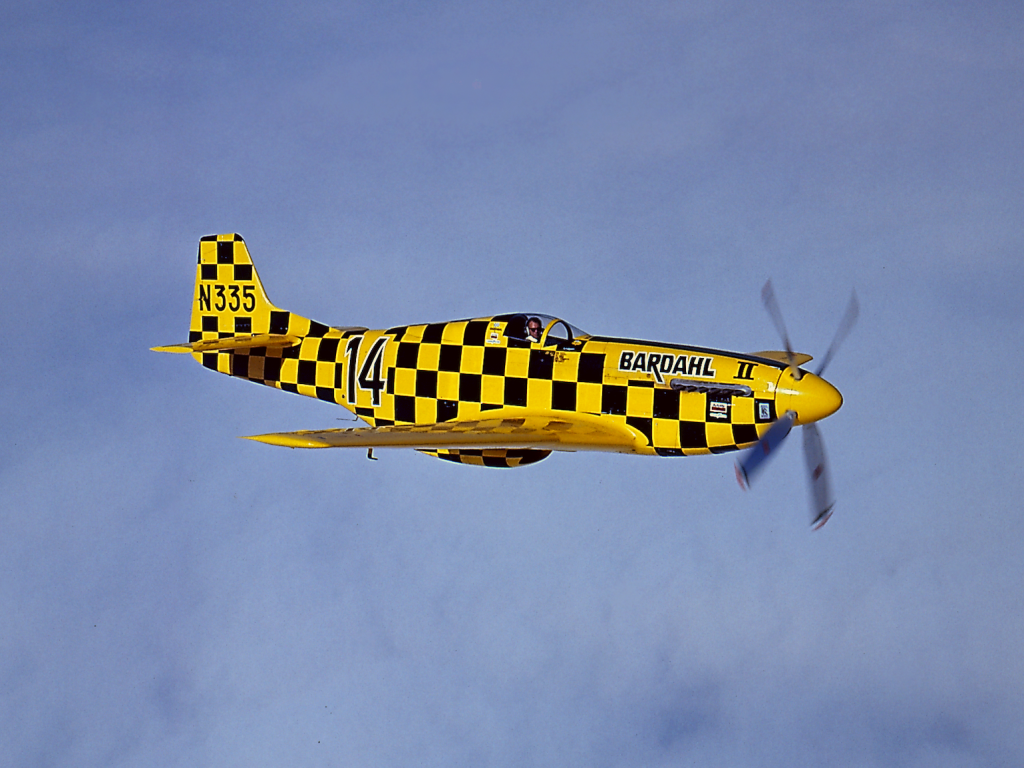
The 1968 Harold’s Cup was to be the last cross-country race for Weiner. At beginning of the 1969 race, N335, resplendent in its new overall red paint scheme and STP sponsorship, E.D. flew Race 14 to Reno for display, but too late to participate in the cross-country race. He then flew his pylon race (N335J/Race 49) from Long Beach to Stead and qualified in fifth at 357.09mph. On September 19, during Heat 1, E.D. inexplicably pulled up and out of the race and circled over the racecourse until the race was over and the other pilots landed. E.D. taxied to the ramp and shut down; it was immediately apparent that something was wrong. He looked ashen and was sweating profusely. He was taken to Washoe Medical Center. Sadly, on September 29, 1969, E.D. Weiner passed away at just 47 years old.
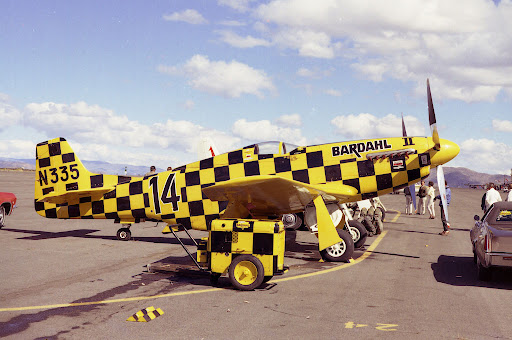
After E.D.’s passing, his widow, Valerie Bonzer, tucked both Mustangs away for several years, though she loaned them to the Experimental Aircraft Association (EAA) Museum at the Burlington, Wisconsin Airport from 1971-’78. Upon After returning to California, N335 was returned to its 1965 configuration, and made several demonstration laps with N335J at Reno 1979. At the conclusion of the weekend, N335 was flown to Truckee, California and except for airshows and other events the aircraft remained in its hangar away from public view. In 1990, it received an annual and test flown, but due to low oil pressure it was ultimately disassembled and trucked to Falcon Field in Mesa, Arizona. In 1996, Dave Goss had just opened his own restoration shop, GossHawk Unlimited, Inc., when he received a visit from Miss Valerie Bonzer, “We got the aircraft in 1996 when Valerie retained me to bring N335 back to airworthy status. She was a pretty amazing lady. I really enjoyed working with her. Listening to her talk was almost as fun as restoring the plane.” Goss related to the author in 2014.
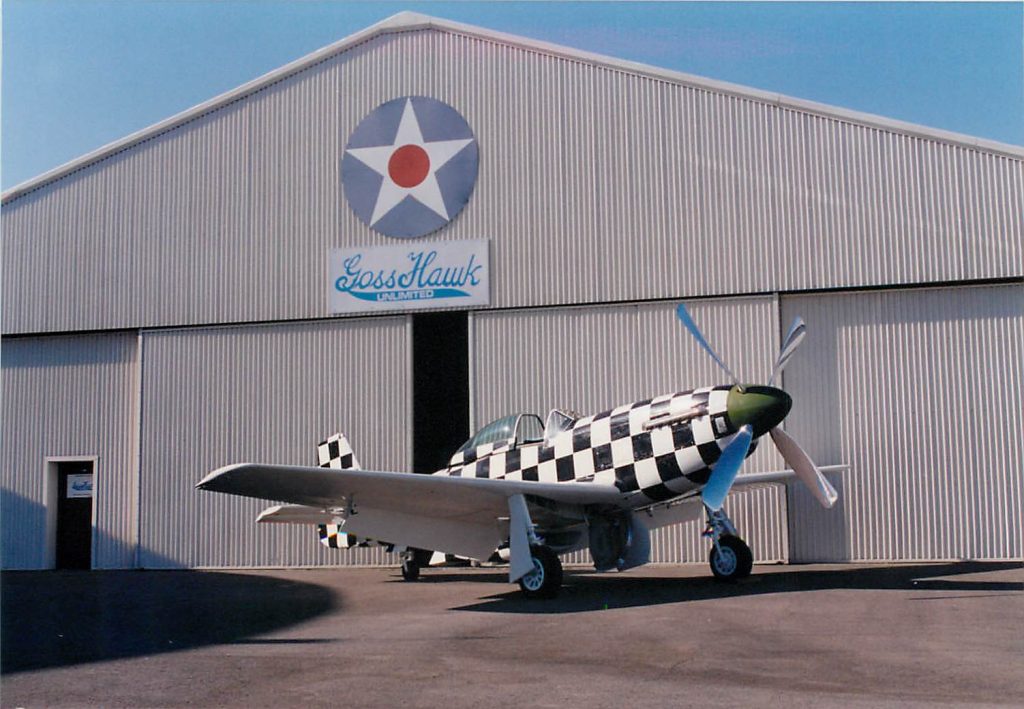
Once Goss and his crew started working on the Mustang, they found that Weiner never modified any of the internal structure. Goss explained, “E.D. made numerous modifications to the internal systems of his Mustangs, especially this airplane, but the external changes made to the aircraft were straightforward, and did not involve cutting into any internal structural members of the airframes. When E.D. modified the airplane with the cut down canopy in 1968, he did so using the stock canopy rails. When we went to get the airplane, I saw the red canopy (from the 1969 STP scheme) up in the rafters.”
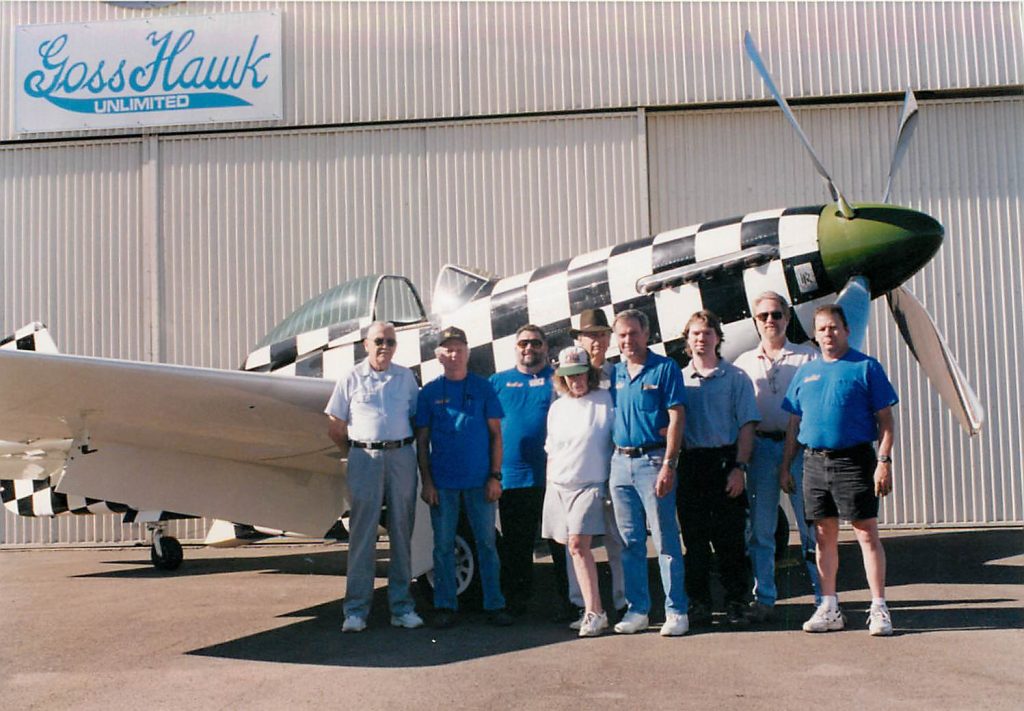
When it came to restoring the cockpit and other internal systems, the GossHawk team was amazed at the systems Weiner had installed in the wet-winged stallion, “The inboard fuel tanks were stock, but the rest of the wing was wet, which we thought was dangerous, so we did not save that system.” When it came to avionics and cockpit displays, N335 was packed with now-antiquated equipment, but at the same time it showed just how cutting-edge and forward-thinking Weiner was in the 1960s, “One of E.D.’s businesses were aircraft electronics, and he was good friends with Bill Lear and his son, John. When we opened the rear fuselage, we found the original prototype for Lear’s autopilot. It had tubes and was so big you could hardly get in the hellhole. Valerie told me Lear designed it, and E.D. tested it during the cross-country races. I told her it was really cool, but it was so heavy and old, and it would never work, so we took it out and saved it,” Goss recalled.
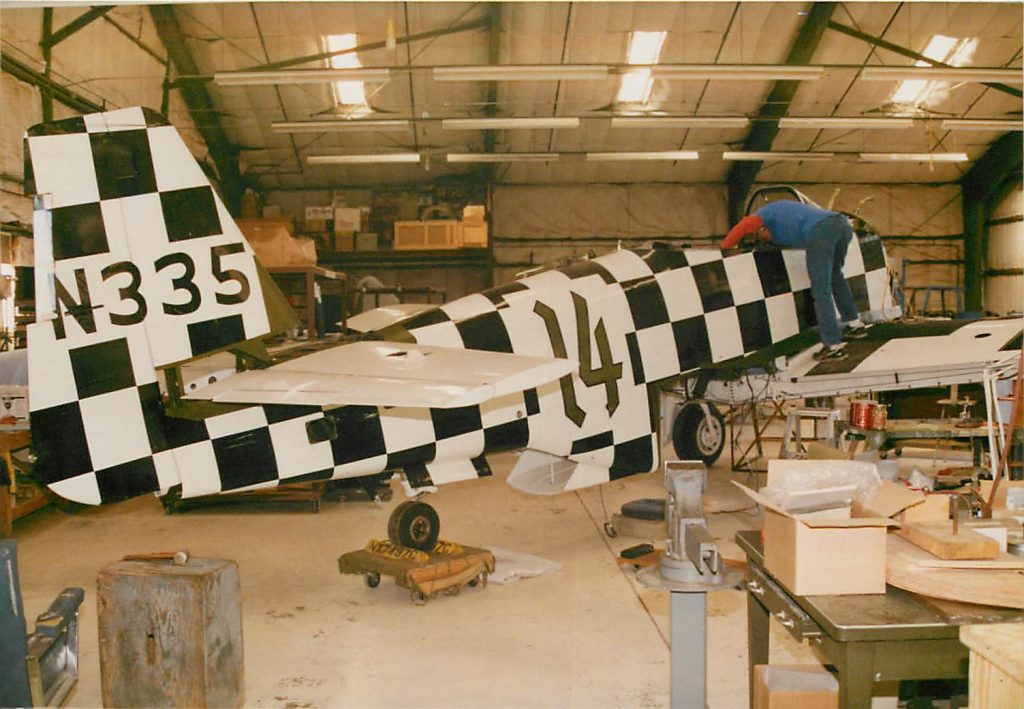
When they began working on the cockpit, the GossHawk crew faced a conundrum. How to restore the cockpit? Return it to stock, leave it as is with all the high-tech-for-the-1960s racing instrumentation, or bring it up to modern standards? Goss asked Ms. Bonzer what she wanted to do, and she told him to restore it however he saw fit, “When we got it in the shop there were valves, gauges, switches, and things everywhere! It was a functional cockpit, but it was not tidy! If he had an idea and an instrument he made a bracket, stuck it in the cockpit, ran the wire or plumbing, tie wrapped it in place and that was it. When he was finished, it looked like he painted it with ACE Hardware rattle can spray paint! There were all kinds of colors in there- blacks, browns, greens, grays, etc. In the end we restored the cockpit to near-stock, with modern upgrades, because we felt that if it was going to fly, it should be modernized and more user-friendly.”
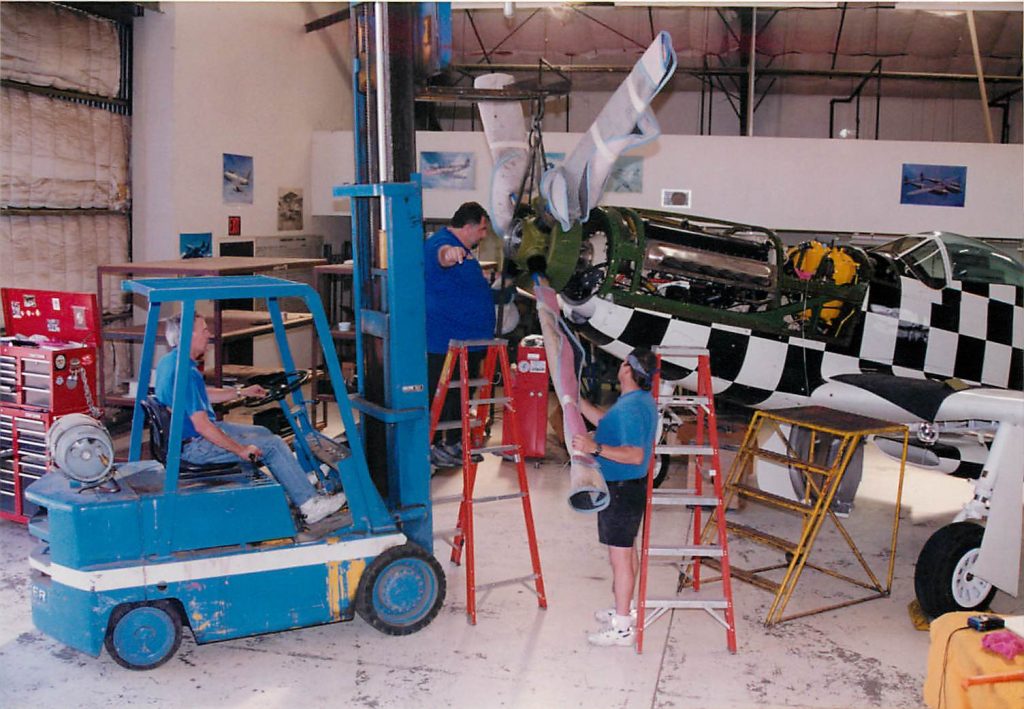
After 18-months, GossHawk had BARDAHL II ready to fly. The Merlin, rebuilt by Dwight Thorn, had been run five hours in his test cell. GossHawk had installed it in the airframe, and were preparing for engine runs and flight tests when Bonzer abruptly pulled the plug. Goss said, “…she stepped in and said, ‘I don’t want it run.’ She never told me up front she did not want it to run; I was under the assumption that it would be test flown and hit the airshow circuit.”
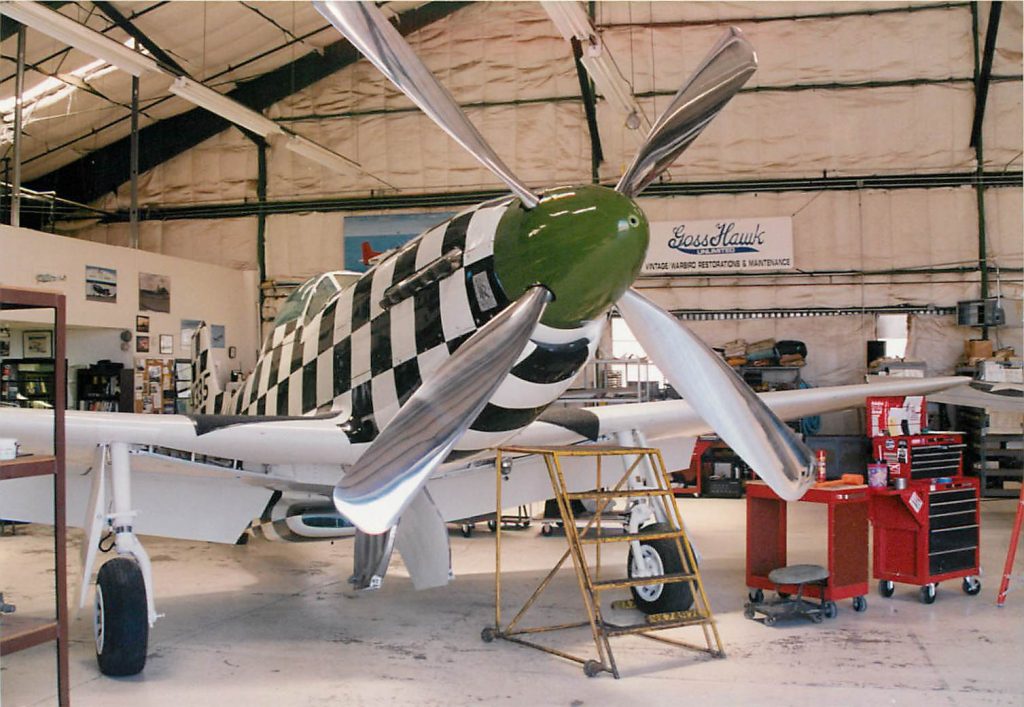
After restoration was halted, the Mustang was returned to its T-hangar near the end of 1997. For five years or so, it was covered, air was kept in the tires, and about once a year, GossHawk would spray preservative in the engine, pull the plugs, fill the carb, and spray additive up the intake system, but that too was eventually stopped. Goss has not seen the aircraft since 2024, and enthusiasts have only caught fleeting glimpses of the historic racer, with the last being this year.
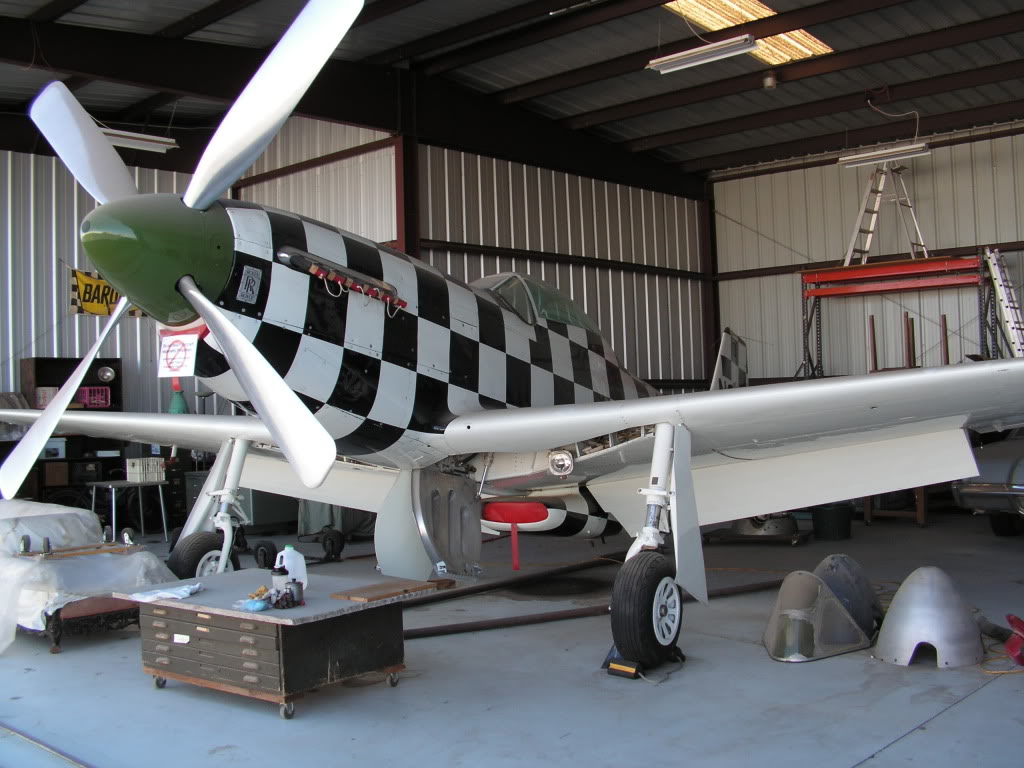 Earlier this week, Vintage Aviation News was contacted by E.D. Weiner’s stepson, Frederick Kohler, who said the historic Mustang is now for sale. He said, “…Race 14, which so well represents the American Dream in the positive exceptionality of our country, in which almost any individual can improve his life, with integrity, intelligence, and persistence. This was demonstrated by Ellis when he joined the RCAF in 1940, flew the Hump, and became one of the original air racing pilots in 1964. He was supported and backed by my mother, Valerie Bonzer, who raised herself and others from poverty during the Great Depression and founded her Aviation War Surplus business in 1947 and remained involved in the business until her 104th birthday in 2020. This aircraft is fine as BARDAHL II, but we have rechristened Race 14 as American Dreamer and created the Valerie Bonzer Foundation for The American Dreamer, Inc. (aka: VB4AD), a 501c3 to assist others in achieving their own dream, and the sale of aircraft will facilitate the work of this project.” To contact the owner, check the details below or Frederick Kohler – AmericanDreamer.org – Best E-mail: mail [@]P51.com – mobile: 310-927-5552
Earlier this week, Vintage Aviation News was contacted by E.D. Weiner’s stepson, Frederick Kohler, who said the historic Mustang is now for sale. He said, “…Race 14, which so well represents the American Dream in the positive exceptionality of our country, in which almost any individual can improve his life, with integrity, intelligence, and persistence. This was demonstrated by Ellis when he joined the RCAF in 1940, flew the Hump, and became one of the original air racing pilots in 1964. He was supported and backed by my mother, Valerie Bonzer, who raised herself and others from poverty during the Great Depression and founded her Aviation War Surplus business in 1947 and remained involved in the business until her 104th birthday in 2020. This aircraft is fine as BARDAHL II, but we have rechristened Race 14 as American Dreamer and created the Valerie Bonzer Foundation for The American Dreamer, Inc. (aka: VB4AD), a 501c3 to assist others in achieving their own dream, and the sale of aircraft will facilitate the work of this project.” To contact the owner, check the details below or Frederick Kohler – AmericanDreamer.org – Best E-mail: mail [@]P51.com – mobile: 310-927-5552
Frederick KohlerAmericanDreamer.orgBest E-mail: mail [@]P51.commobile: 310-927-5552 |







